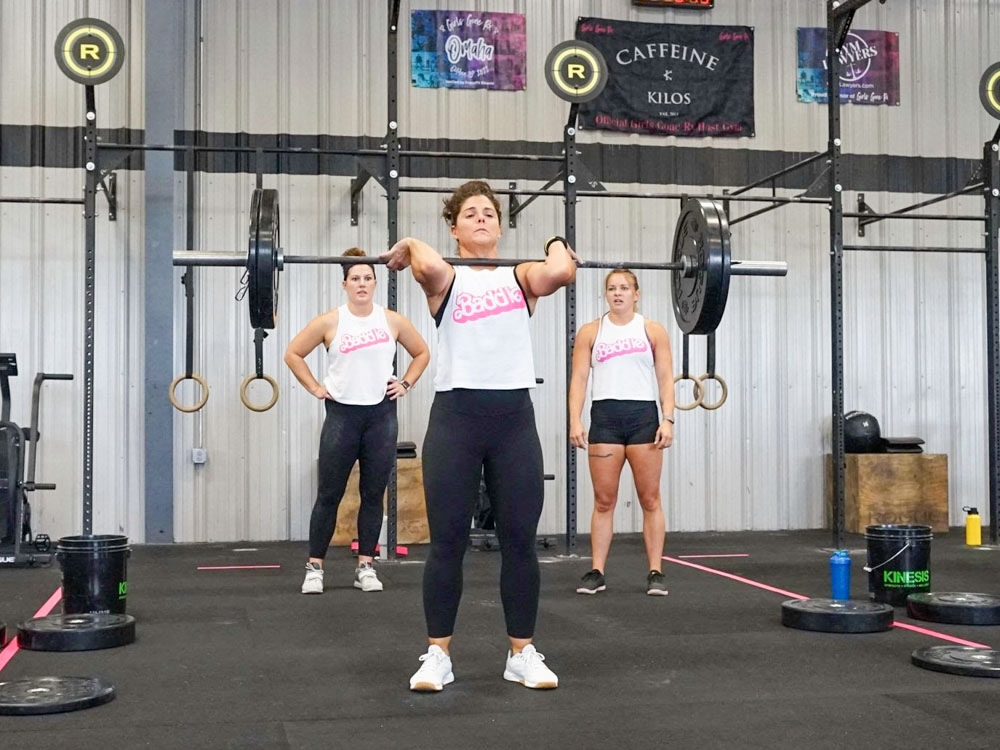
The crossFit Myth
Often, when people hear that we’re located inside a gym that offers CrossFit, they respond with something like:
“Oh wow, you must see a lot of injuries!”
To be blunt — this injury myth needs to die.
Yes, injuries can happen in CrossFit, just like they can happen in weightlifting, bodybuilding, running, and almost any other sport or physical activity. But for some reason, CrossFit seems to get an unfair reputation as being particularly dangerous. So, is this belief rooted in fact or simply a misconception? Let’s take a look at the data to uncover the truth.
Injury Rates: CrossFit vs. Other Activities
First, it’s important to look at injury rates across a few different sports and activities. Here’s what the research says based on a summary of three studies that measured injury rates per 1,000 training hours (1, 2, 3):
- CrossFit: 0.3 to 1.9 injuries per 1,000 hours
- Running: Approximately 2.5 to 12.1 injuries per 1,000 hours
- Weightlifting: Around 2.4 to 3.3 injuries per 1,000 hours
- Soccer: Roughly 6 to 9 injuries per 1,000 hours
- Gymnastics: Approximately 7 to 9 injuries per 1,000 hours
At first glance, the data clearly shows that CrossFit injury rates fall well within the range — and even on the lower end — compared to other popular sports. Running, for example, has a significantly higher injury rate, yet it’s rarely viewed as a “dangerous” activity. Weightlifting, soccer, and gymnastics also have injury rates that surpass those seen in CrossFit, but they don’t carry the same stigma.
So why is there such a double standard when it comes to CrossFit?
The Misconception of CrossFit Danger
Despite the evidence, CrossFit continues to face criticism and is often labeled as more injury-prone than other forms of exercise. Yet we rarely, if ever, hear calls to ban running due to its injury risk, nor do we see weightlifting being viewed as “dangerous.” It seems that CrossFit has become the victim of a fitness myth that’s past its expiration date.
To put this into perspective, let’s debunk a few more common fitness myths that have persisted for far too long:
- “Your knees are bone on bone, stop running.”
- Truth: While certain joint conditions require care, running itself isn’t inherently bad for the knees if done with proper technique and care.
- “Deadlifts are bad for your back.”
- Truth: Deadlifts, when performed correctly, are actually one of the best exercises to strengthen your back and prevent injury.
- “Saturated fats are bad.”
- Truth: While excessive consumption of saturated fats can be harmful, they can be part of a healthy, balanced diet when consumed in moderation.
Like these myths, the misconception about CrossFit being inherently dangerous is rooted more in misinformation than in fact. Yes, injuries can happen in CrossFit, but they are not as common or severe as the myth suggests.
How to Mitigate Injury Risk in CrossFit
That said, injuries can and do happen in CrossFit, just as they do in any physical activity. However, the good news is that there are several ways to significantly reduce your risk of injury while still reaping the benefits of this high-intensity workout style. Here are a few key strategies:
Focus on Proper Technique
Learning the correct form for each exercise is essential for avoiding injury. Rushing through movements or lifting weights that are too heavy without proper form can increase your risk of injury in any sport, not just CrossFit.
Seek Out Great Coaching
At Big Omaha Fitness (shout out to our amazing coaches!), we emphasize the importance of skilled coaching. A knowledgeable coach can correct your form, help you scale workouts to match your ability level, and provide guidance on how to progress safely.
Use Sensible Training Volumes
Training consistently without overdoing it is key to staying injury-free. High-intensity exercise doesn’t mean you need to push your body to the brink of exhaustion every time you work out. Gradual, sustainable increases in intensity and volume will keep you progressing safely.
Why CrossFit is Worth the Effort
At the end of the day, CrossFit is no more dangerous than other popular activities like running, weightlifting, or team sports. In fact, it can be safer when done under the right guidance and with a focus on technique. Like any form of exercise, the key is to be mindful of your body’s limits, train smart, and get proper coaching.
As healthcare providers in a sea of health and fitness myths, we’re here to help people stay well-informed, healthy, and moving in the right direction for the long term. Our goal is to empower you to make smart decisions about your fitness — whether you choose CrossFit or another type of workout.
If you’ve heard any other fitness myths or have concerns about injuries, we’d love to discuss them and help you stay on track with your health and fitness goals.
Keep Moving Forward
Ultimately, we believe that CrossFit — when approached with the right mindset and care — is a safe and effective way to stay fit. So, next time someone mentions the “dangers” of CrossFit, you can confidently share the facts and put that myth to rest.
Dealing with an injury?
Schedule a free phone consultation with a Forward Omaha physical therapist, and take the first step to feeling your best.

Dr. Vince Van Haute PT, DPT, CF-L1, CSCS
I’m the owner and founder of Forward Physical Therapy and Performance. I have worked with numerous athletes that participate in CrossFit, weightlifting, yoga, running and more after they’ve been told by multiple healthcare providers that they have to stop doing what they love. As a physical therapist and strength coach for 9+ years, it has been my mission to help active adults get out of pain and move better so that they can perform at their highest potential.
